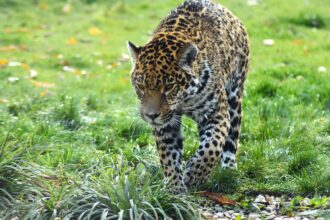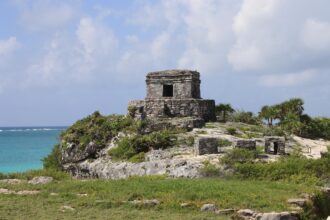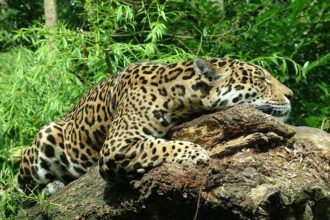Eco Tourism in Tulum: Supporting Jaguar Conservation While Exploring Nature
The Tulum Ecosystem: A Biodiverse Paradise
Located on the Caribbean coast of Mexico’s Yucatan Peninsula, Tulum is not just renowned for its stunning beaches and ancient Mayan ruins; it is also a critical habitat for diverse wildlife, including the elusive jaguar (Panthera onca). This picturesque region boasts a rich biosphere characterized by tropical forests, cenotes, and coastal wetlands. Tulum’s unique ecological landscape is crucial for various species, ensuring a balanced ecosystem.
The Significance of Jaguars in the Ecosystem
Jaguars play a vital role in maintaining the health of their habitats. As apex predators, they regulate the populations of other species, promoting biological diversity. Their presence is crucial as it maintains the balance between herbivores and plants, contributing to the stability of the ecosystem. However, the jaguar population in Tulum is threatened by habitat destruction, poaching, and climate change. Preserving their habitat is vital not only for the species but for the overall health of the Tulum ecosystem.
Eco Tourism: A Sustainable Approach
Eco tourism is defined as responsible travel to natural areas, which conserves the environment and improves the well-being of local people. In Tulum, eco tourism has emerged as a sustainable alternative to mass tourism, providing opportunities for travelers to enjoy the magnificence of nature while supporting local conservation efforts aimed at protecting the jaguar and its habitat.
Engaging in Eco-Friendly Activities
-
Wildlife Tours and Safaris
Engaging in guided tours allows visitors to explore the natural habitats where jaguars reside. Led by trained eco guides, these adventures often highlight conservation education, teaching participants about local wildlife and the importance of preserving the jaguar’s natural environment. -
Bird Watching
Tulum is a birdwatcher’s paradise, home to over 300 species. Eco tourism providers often organize birding excursions, where tourists can spot endemic and migratory species while appreciating Tulum’s lush landscapes. This not only raises awareness but also creates funds for conservation efforts. -
Cenote Exploration
The region’s cenotes, or natural sinkholes, offer unique ecosystems teeming with life. Eco-friendly tours to these sites promote sustainable swimming and snorkeling experiences, encouraging visitors to respect these fragile environments. Programs focused on conservation provide insights into the importance of water quality and ecosystem integrity. -
Community Involvement
Eco tourism in Tulum often collaborates with local communities, empowering them to engage in conservation efforts while promoting their cultural heritage. Travelers can participate in community-led programs that educate about jaguar conservation, fostering a connection between visitors and local inhabitants. - Sustainable Accommodations
Many hotels and lodges in Tulum adopt eco-friendly practices, such as solar energy, waste recycling, and organic food sourcing. Choosing these accommodations allows visitors to minimize their environmental footprint while enjoying their stay. This conscious choice contributes to local sustainability initiatives directly supporting wildlife conservation.
Educational Programs and Workshops
Educational initiatives are a cornerstone of eco tourism in Tulum. Workshops incorporated into eco tourism packages can cover various topics, including jaguar behavior, conservation strategies, and sustainable living practices. These programs offer tourists an in-depth understanding of the delicate balance in the ecosystem and the urgent need for protection measures.
The Role of Local Conservation Organizations
Local organizations play a pivotal role in jaguar conservation efforts. Eco tourism revenue often gets allocated to these nonprofits, which conduct research, habitat restoration, and community engagement programs. Collaborating with these organizations enables travelers to support meaningful conservation initiatives while experiencing Tulum’s natural beauty firsthand.
Ethical Considerations in Eco Tourism
Travelers to Tulum should ensure that their eco tourism practices are genuinely supportive of conservation efforts. Choosing reputable operators, respecting wildlife, and maintaining a low ecological footprint are essential to ensuring that your eco tourism experience positively contributes to the area. Awareness of responsible wildlife viewing and the importance of not disturbing natural habitats enhances eco tourism’s positive outcomes.
The Impact of Eco Tourism on Jaguar Conservation
By choosing eco tourism, visitors contribute to habitat protection and the creation of wildlife corridors that allow jaguars to thrive. Financial support from eco-conscious travelers aids research, outreach, and enforcement of environmental regulations aimed at reducing poaching and habitat encroachment. Ultimately, eco tourism fosters a sense of stewardship for the earth, inspiring future generations to prioritize conservation.
The Future of Eco Tourism and Jaguar Conservation
As eco tourism continues to expand in Tulum, it is essential to maintain a focus on sustainability and local ecosystems. This growth phase can lead to increased job opportunities for residents and promote environmental awareness at all levels. Through collective efforts in conservation, education, and responsible tourism, Tulum holds the potential to not only preserve the existing jaguar populations but to revitalize their habitats, ensuring their survival for years to come.
The Balance Between Adventure and Conservation
Travelers seeking adventure in Tulum can take part in activities such as hiking, kayaking, and exploring ancient ruins, all while being aware of their environmental impact. The correlation between tourism and wildlife conservation cannot be overstated. Adventure seekers can learn about jaguar conservation practices, even while enjoying the thrill of outdoor explorations.
Support for Local Economies
Eco tourism promotes local economies through partnerships with artisans, food producers, and service providers. By prioritizing local businesses, travelers support community-led conservation initiatives, creating a sustainable loop that benefits both humans and wildlife. This symbiosis between tourism and local livelihood strengthens conservation efforts across Tulum, making eco tourism a powerful ally in the fight for jaguar preservation.
Conclusion
Eco tourism in Tulum offers travelers the unique opportunity to experience nature in harmony with conservation efforts. By actively participating in eco-friendly activities and supporting local conservation organizations, tourists can contribute to the vital protection of jaguars and their habitats. The growing eco tourism sector not only raises awareness about Tulum’s incredible biodiversity but also fosters a shared commitment to preserving these natural wonders for future generations.







